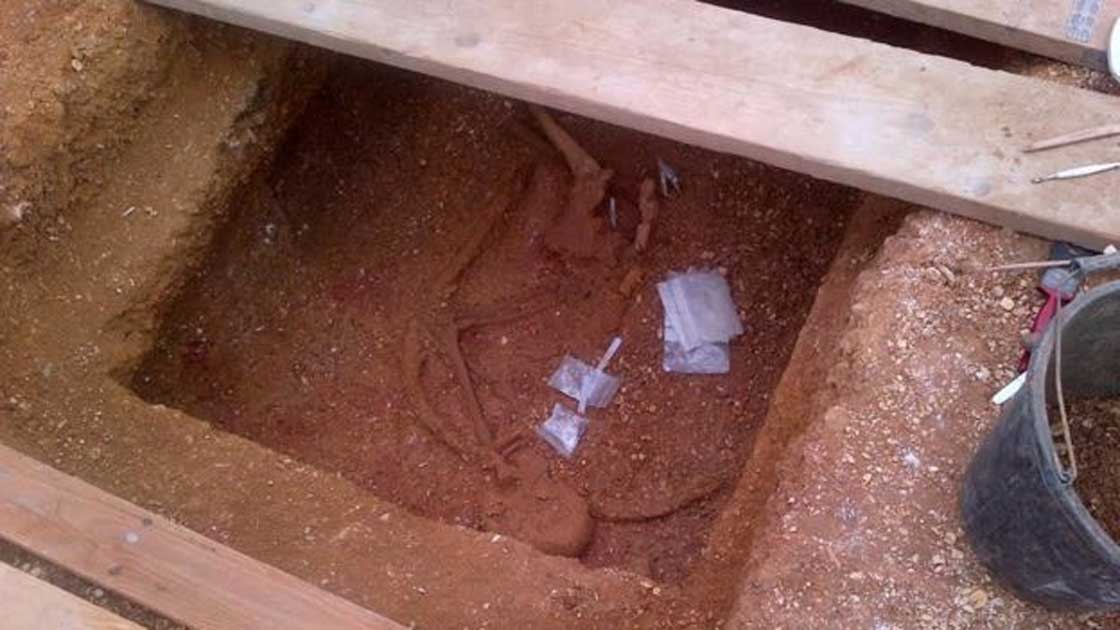Why Did Iron Age People Bury a Chariot and Two Horses?
Yet more fantastic finds are coming out of an Iron Age burial site in England that dates back about 2,500 years. The latest discovery was a burial of a chariot and two horses on the periphery of a cemetery that has yielded grave goods of swords, spears, shields, jewelry, beads, and pottery.
Archaeologists have been digging at the Pocklington, Yorkshire site since construction workers building a new housing project in 2014 found the cemetery of square barrows that has about 150 skeletons. Construction on parts of the site have since halted to give archaeologists time to excavate and document discoveries. Researchers think the site was occupied during the Iron Age, which lasted from about 800 BC to the Roman conquest of 43 AD in Britain.
- Archaeologists find ancient skeleton of a man buried with a shield in England
- After 20 Years, Amateur Metal Detecting Friends Find the Oldest Iron Age Gold Jewelry in Britain

The recent excavations unearthed a chariot and two horses. (Pocklington Post)
Apparently, this horse burial did not include human remains. But researchers with MAP Archaeological Practice are trying to determine how the burial fits into Arras Culture funerary practices.
Paula Ware of MAP Archaeological Practice told the BBC that the burial may also give more general insight into the Arras culture people, who were centered in East Yorkshire, where Pocklington is. Ms. Ware told the Pocklington Post:
“The chariot was located in the final Square Barrow to be excavated and on the periphery of the cemetery. The chariot at Burnby Lane is only the twenty-sixth one to be excavated in the country and the inclusion of horses raises the significance of the burial. The discoveries are set to widen our understanding of the Arras culture and the dating of artefacts to secure contexts is exceptional.”

Readers can get a sense of how big the burial ground is from this photo. It is an Arras culture cemetery of square barrows. The horse and chariot burial was on the periphery of the site. (David Wilson Homes)
The site WorldHistory.Biz reports about the Arras culture:
“The Arras culture is one of several regional cultures that existed in BRITAIN during the IRON AGE. It is clearly distinguishable from most of its local contemporaries by the culture’s uncommon burial rites, which are more reminiscent of Continental European La Tene practices than those of Iron Age Britain. The custom of burying the deceased with their chariots…and of burying individuals within square ENCLOSURES (or possibly square barrows with a surrounding ditch) is largely unknown in the rest of the British Iron Age. However, it is noteworthy that the Arras vehicles are usually disassembled, a practice less commonly seen in the continental chariot burials.”
These people were farmers and herders, growing barley, beans, and wheat, and raising cattle, pigs, and sheep. Apparently they were also at least somewhat warlike.
The burial ground in Pocklington, uncovered during construction of a housing subdivision, includes about 75 square barrows (graves covered with mounds of dirt or stones.)
This chariot burial’s inclusion of horse carcasses heightens the interest in the site for archaeologists.
- Iron Age Burial Ground in Yorkshire Yields 150 Skeletons and Valuable Grave Goods
- Ancient dog prints and Iron Age mint unearthed in England
Apart from this significant find, archaeologists have found a young warrior burial, reports the BBC.
An article in The Yorkshire Post last year says one body found at the site had a broken sword by his side, four spears along his spine, and another near his groin. He was a young warrior, about 17 to 23 years old at death, and researchers speculate he was ritually speared to release his spirit, according to the Post.

Map Archaeological Practice Ltd staff member Sophie Coy holds a spear head that was found at the site. (Yorkshire Post )
Another of the 150 skeletons found so far at the site, also a man, was lying on a shield. That skeleton was found last year, and Ancient Origins had a report on it.
The Guardian reported last year that experts are hailing the site as one of the largest and most significant finds from the Iron Age in recent years. Experts say the site is of international significance.
Top image: Seventy-five graves with about 150 skeletons have been uncovered at the construction site in Pocklington, England. Workers halted construction so an archaeological firm could excavate and document the site. Usually when human remains are exhumed they are returned to the earth later, but grave artifacts go to museums. Source: David Wilson Homes photo
By Mark Miller



















